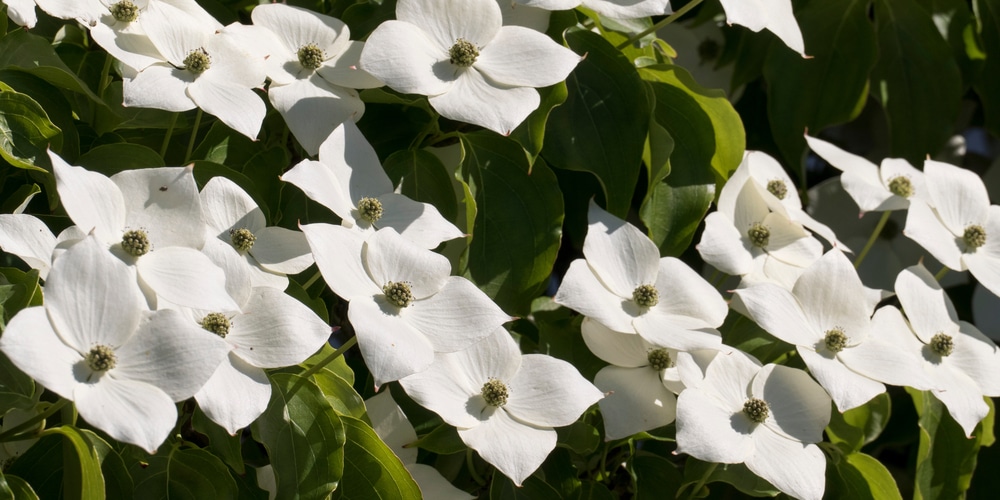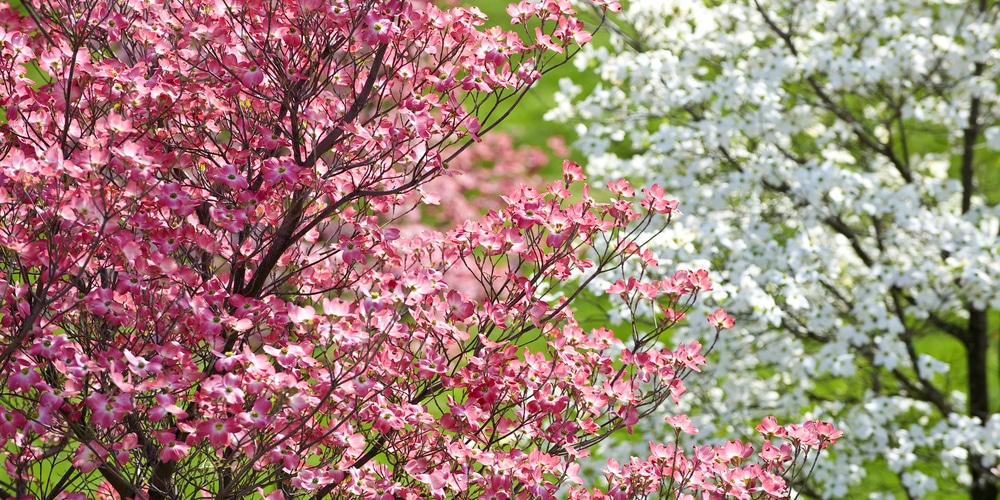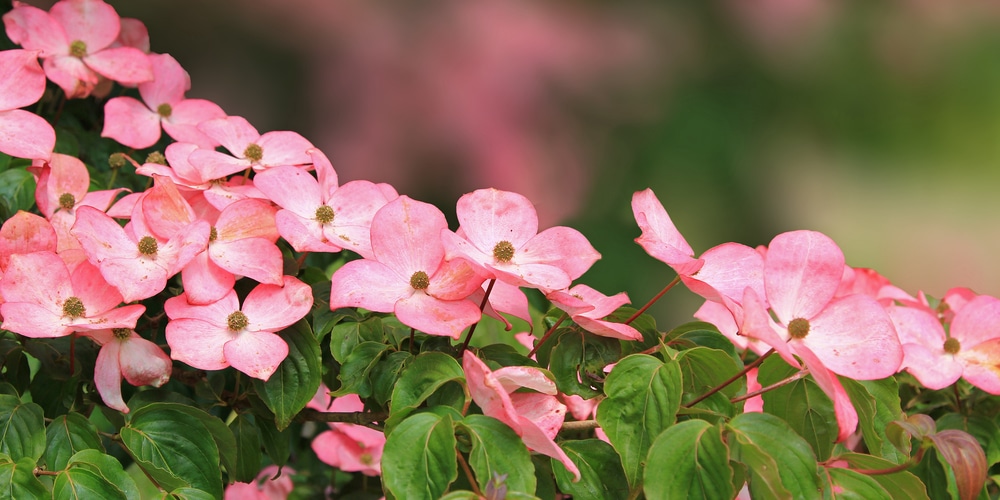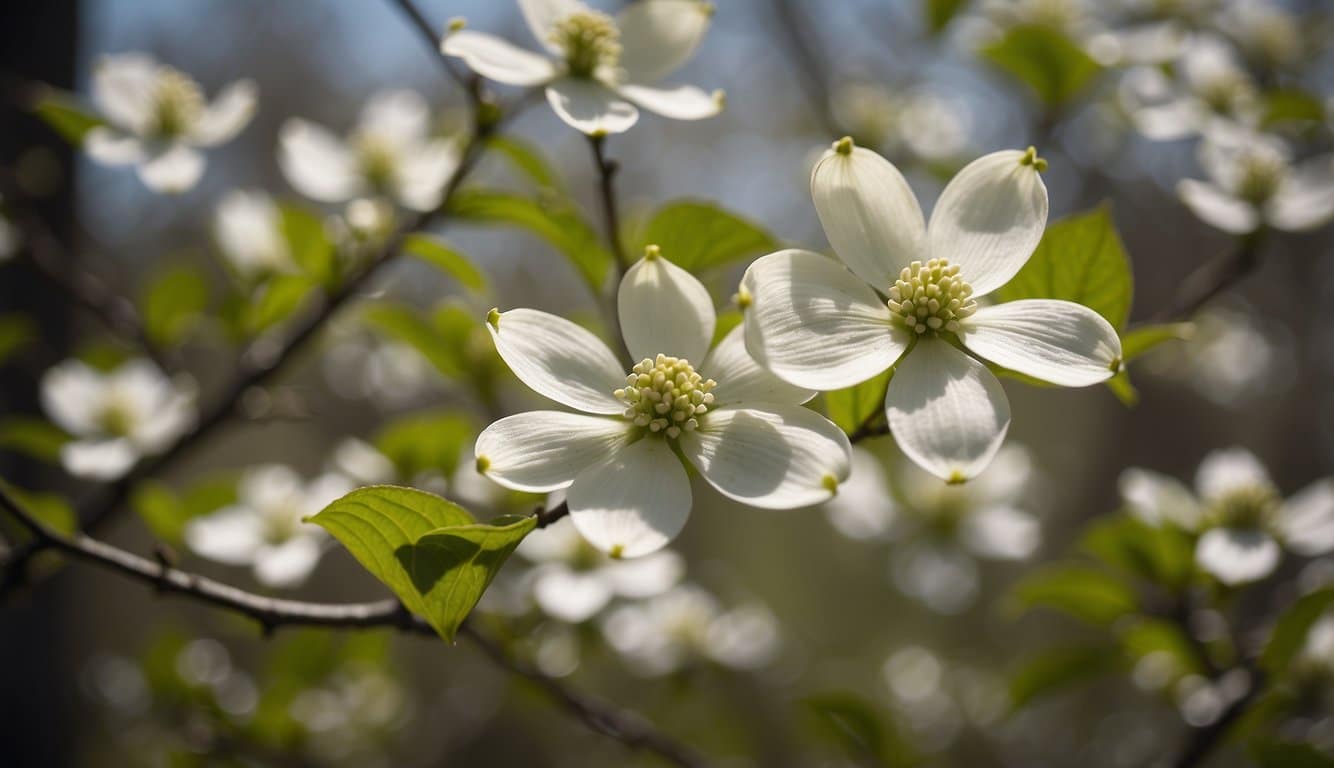Welcome to our dogwood planting guide. The “when” of the situation is going to depend a lot on where you live. Let’s get to it!
| Question | When to Plant Dogwood Trees? |
|---|---|
| Answer | Fall or Early Spring |
| More Info | Planting in fall allows roots to establish during the cooler months, minimizing stress on the tree. In early spring, plant before leaf-out. Consider climate zones: In cooler zones (3-5), opt for spring to avoid winter stress. In warmer zones (6-9), fall is ideal, providing a longer root establishment period before summer heat. |
Dogwood Tree Planting: 101
Dogwood trees captivate gardeners with their year-round beauty. Knowing when to plant and preparing the soil correctly are crucial for a healthy, thriving tree.
Best Time of Year to Plant Dogwood Trees
The optimal period for planting dogwood trees is during their dormancy, typically in the fall or early spring. Fall planting allows the tree to establish its root system before the onset of winter. Conversely, early spring planting capitalizes on the subsequent growth season, providing ample time for the trees to develop roots before summer’s higher temperatures.
- Fall: September to November
- Early Spring: March to April
Soil Preparation for Dogwood Planting
Before planting dogwood trees, it’s essential to prepare the soil to ensure successful growth. Dogwood trees prosper in moist soil that provides adequate drainage. To prepare the site:
- Test the soil pH: Dogwoods prefer slightly acidic soil with a pH of 5.5 to 6.0.
- Enrich with organic matter: Incorporate compost or well-rotted manure to improve soil fertility.
- Ensure proper drainage: If necessary, raise the planting area to avoid waterlogging.
By following these foundation steps, one can lay the groundwork for their dogwood tree to become a stunning addition to their garden.
Selecting a Suitable Location for Dogwood Trees
Planting a dogwood tree in the right location is crucial for its growth and longevity. Proper sunlight and soil conditions significantly influence the health of these trees.
Sunlight Requirements for Optimal Growth
Dogwood trees thrive in conditions where they can receive ample sunlight, yet they also benefit from partial shade. Ideally, they should get morning sunlight and afternoon shade, especially in hotter climates to prevent damage from the midday sun. Young trees, in particular, are sensitive to overexposure and should be protected accordingly.
Soil Conditions and Drainage Considerations
The foundation for a healthy dogwood tree starts with the soil. These trees prefer soil that is:
- Well-draining: Soggy soil can lead to root diseases.
- Fertile: Nutrient-rich soil fosters better growth.
- Slightly acidic to neutral pH: A pH of 5.5 to 7 is ideal.
One should also consider the soil’s ability to retain some moisture without becoming waterlogged. Incorporation of organic matter, such as compost, can help to both nourish and improve the soil structure. Regular mulching around the base helps to maintain moisture and temperature balance.
Step-by-Step Planting Process
Planting a dogwood tree requires precision and care at every step to ensure the tree’s healthy growth and longevity. Detailed attention to digging the correct hole and employing the appropriate planting techniques are crucial.
Digging the Right Hole for Your Dogwood
The size and condition of the planting hole are pivotal for the dogwood’s root system. A gardener should dig a hole that is three times as wide and as deep as the root ball of the tree. This encourages the roots to spread without constriction. The texture of the soil should allow good drainage, yet hold enough moisture without becoming waterlogged.
- Width of the hole: Three times the diameter of the root ball.
- Depth of the hole: Same as the height of the root ball or slightly less to prevent settling.
Proper Techniques for Planting Dogwood Saplings
Once the hole is prepared, one should carefully place the sapling inside without bending the roots. The root ball should be level with the surrounding ground. Backfill the hole with native soil that was removed, which should be loose and rich in organic matter.
- Root ball placement: Level with the ground.
- Soil for backfilling: Native soil, loose, and rich.
- Watering: 1-2 gallons per week is recommended, with adjustments made based on rainfall.
Post-Planting Care and Maintenance
After planting a dogwood tree, careful attention to watering and soil management ensures healthy growth. Detailed below are recommended practices for new dogwood trees’ hydration needs and soil care.
Watering Schedule for New Dogwood Trees
First Week: Water dogwood trees daily to keep the soil evenly moist, providing approximately 1 to 2 gallons of water each time.
Second Week Onward: Taper down to watering once a week, ensuring at least 1-2 inches of water which may come from rainfall or supplemental watering.
Note: Frequency may vary based on local rainfall and weather conditions.
Mulching and Fertilization Recommendations
Mulching:
- Apply a 2-3 inch layer of organic mulch around the tree’s base.
- Ensure the mulch is not in direct contact with the trunk to prevent rot.
Fertilization:
- Wait until the second year to begin fertilization.
- Use a balanced, slow-release fertilizer in early spring, around the tree’s drip line.
Organic matter can be added to improve soil health and moisture retention.
Common Challenges in Growing Dogwood Trees
Growing dogwood trees can be a delightful addition to a garden, but they do face various challenges including pests and diseases which can affect their health and growth.
Pest Management for Dogwood Trees
Dogwood trees may fall victim to several pests, necessitating proactive management to maintain their health and appearance. Borer insects, for example, dig into the trunk, disrupting nutrient flow, while dogwood sawfly larvae feed on the leaves, leading to defoliation. To combat these pests, gardeners should:
- Regularly inspect trees for signs of pest activity, namely holes in the trunk or chewed leaves.
- Apply horticultural oil or insecticidal soaps when pests are detected; however, always follow the product label’s application instructions.
Disease Prevention Strategies
Diseases present a severe challenge to dogwood trees, with dogwood anthracnose and powdery mildew being among the most common. Implementing strategic disease prevention can help ensure the trees remain vibrant and strong. Key strategies include:
- Ensuring good air circulation through proper planting and pruning which assists in minimizing fungal disease risk.
- Applying fungicides as a preventive measure in the spring, particularly in areas where dogwood anthracnose is prevalent.
Frequently Asked Questions
This section addresses common queries regarding the optimal conditions and practices for planting dogwood trees to ensure their health and vitality.
What is the ideal season to plant dogwood trees?
The best time to plant dogwood trees is during the fall or early spring while the tree is dormant. Planting in the fall allows the roots to establish before winter, and an early spring planting offers time for growth before the summer heat sets in.
How do dogwood trees perform in full sun conditions?
Dogwood trees thrive in partial shade with a maximum of 4-5 hours of direct sunlight a day. Excessive exposure to full sun can stress the trees, especially in hotter climates.
Which planting methods are recommended for dogwood trees in clay soil?
In clay soil, it’s crucial to prepare the planting site by amending the soil with organic matter to improve drainage. Planting slightly above the surrounding soil level can also help prevent waterlogging around the roots.
Can dogwood trees be successfully grown in containers?
Dogwood trees can be grown in containers, provided that they are sufficiently large to accommodate root growth. Regular watering and feeding are important since containerized plants have limited access to nutrients compared to those planted in the ground.
What are the growth characteristics of dogwood trees regarding height and width?
Typically, dogwood trees grow to a height of 15-30 feet, with some species like the Pacific dogwood reaching 40-60 feet. The width of dogwoods generally falls within a similar range as their height.
Are there any considerations for planting a dwarf dogwood tree?
When planting a dwarf dogwood, gardeners should consider its smaller stature, typically under 10 feet in height, and ensure it is planted in a location that caters to its size and sunlight needs. Dwarf varieties may also require less water than their larger counterparts.
Last update on 2024-04-26 / Affiliate links / Images from Amazon Product Advertising API







